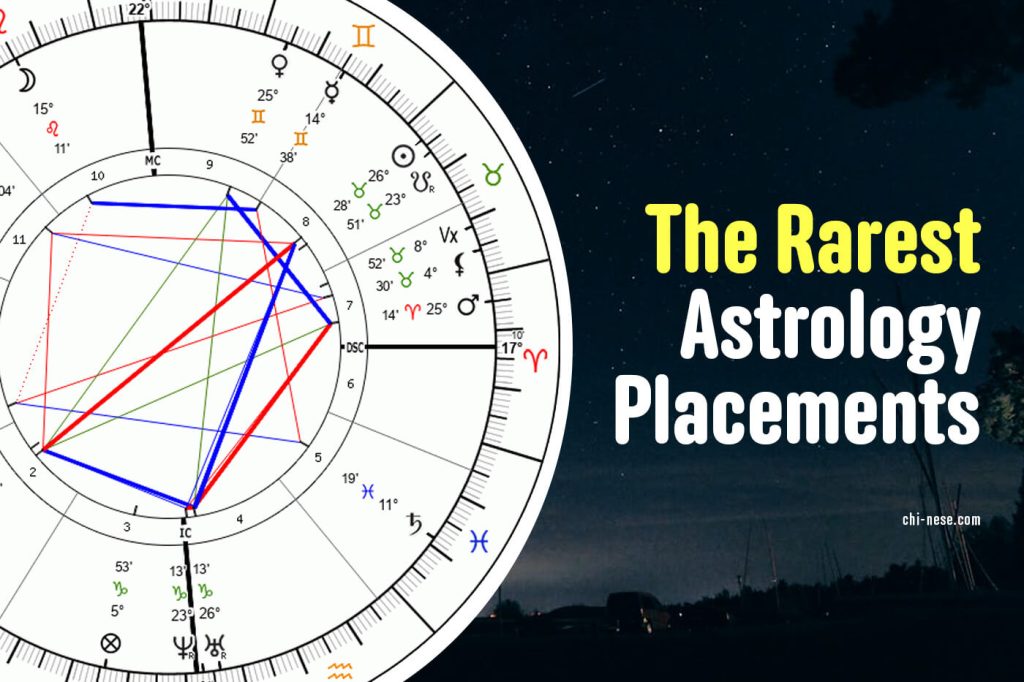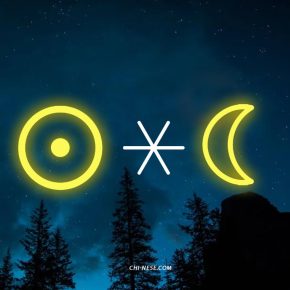Have you ever wonderered why your life feels a little offbeat compared to everyone else’s? Sometimes it’s not just your Sun sign or rising… it’s rare alignments in your birth chart that set you apart. While no single placement makes someone “special,” certain unusual patterns appear less often and often come with a sense of living outside the ordinary script.
Below, I’ll cover some of the rarest astrology placements and what they tend to symbolize. If you find one in your chart, don’t treat it as a curse or a crown… it’s simply part of your unique wiring.
What Makes a Placement Rare?
Not every unusual chart feature is technically rare. Planets orbit in predictable cycles, so most combinations eventually repeat. But astrologers call something “rare” when:
- A slow-moving planet (Pluto, Neptune, Uranus) makes an exact hit to a personal planet.
- Multiple planets concentrate in one sign, house, or degree.
- A chart contains a configuration that happens infrequently, like a Yod or Grand Cross.
- Every planet shares a condition (all direct, all above 25°, all in one hemisphere).
It’s the combination that creates rarity, not just a single planet sitting somewhere unusual.
Interceptions, Clusters, and Extremes
- Stelliums: Three or more planets in the same sign or house. Common enough, but five or more concentrated together? That’s rare. People with these charts embody the sign’s qualities in an extreme way, like a walking archetype.
- House clusters: When most planets fall into one house, life feels hyper-focused. An 8th house cluster pushes you into themes of intimacy, psychology, and transformation. A 10th house cluster points to legacy, career, and public identity.
- All planets direct: Statistically quite uncommon, because at any given time a few planets are in retrograde. An “all direct” birth chart describes someone who tends to move forward quickly, without constantly circling back to review or redo. Life unfolds fast, sometimes too fast, with fewer pauses for reflection.
- All planets at 25° or later: Having many planets in the late degrees gives you “old soul” energy. These placements feel seasoned, as if the sign’s lessons are reaching a peak. People with multiple late-degree planets often carry a sense of urgency, finishing karmic business rather than starting fresh.
Rare Planetary Aspects
The Great Conjunction (Jupiter–Saturn)
Born during one of these 20-year alignments? You carry a blend of big vision (Jupiter) and long-term discipline (Saturn). Your life unfolds in long chapters with turning points that demand patience, planning, and perseverance.
Jupiter–Venus Conjunction
Sometimes nicknamed the “lucky star,” this conjunction boosts charm, creativity, and magnetism. It draws love, opportunities, and abundance with less effort than usual. Sometimes, though, it can tempt you into overindulgence or chasing pleasure for its own sake. While not the rarest placement, it’s still distinctive enough to feel like a cosmic blessing.
Pluto–North Node Conjunction
An intense placement. Life pushes you through constant transformation tied to destiny itself. Power struggles, control issues, or crises may feel unavoidable, but they push you toward deep soul growth.
Sun Conjunct Regulus
A royal star placement that brings charisma, leadership, and sometimes dramatic rises and falls. Used wisely, it creates people who inspire, protect, and lead with courage.
Configurations That Rarely Show Up
Three Yods (Finger of God)
A Yod is formed when two planets in sextile both quincunx a third. It’s rare to see, and having three or more planetary Yods in one chart is extremely unusual. People with this pattern often feel pulled toward a specific, almost fated life direction that takes years to clarify. Early life may feel restless or scattered until the “apex” planet reveals its role.
Grand Quintiles
Quintiles (72° aspects) relate to creativity and genius. A Grand Quintile links five planets in a star-like pattern. Extremely rare, it often points to unusual talents or ways of thinking that don’t fit into mainstream molds.
Kite Pattern
An extension of a Grand Trine, this adds a planet in opposition to one corner, creating both flow and tension. Rare and powerful, it often brings an opportunity to direct natural gifts toward something concrete.
Unaspected Planets
Finding even one completely unaspected planet is uncommon, and having two or more is very rare. These planets operate independently, often showing up as raw, unfiltered energy:
- Unaspected Venus: Relationships swing between extremes, with powerful attractions or total detachment.
- Unaspected Mars: A raw surge of willpower and drive, often unpredictable.
- Unaspected Moon: This is a deep one. Emotional life feels separate from the rest of the personality, producing powerful intuition but sometimes isolation.
Because they’re not tied into the rest of the chart, these planets often feel untamed and hard to integrate.
Pisces/Aries Rising
Pisces and Aries are statistically the least common rising signs. That’s because rising signs shift roughly every two hours, but Pisces and Aries ascend more quickly on the horizon, closer to 90 minutes on average. With less “time on stage” each day, fewer people are born with these ascendants.
Why Rare Doesn’t Mean Better
Rare placements don’t make anyone superior. They just mark unusual patterns of growth. These charts often feel intense, because the energy concentrates in narrow but powerful ways. If you have one or more, lean into integration rather than labeling yourself “special.” The gift of rarity is perspective, not hierarchy.












